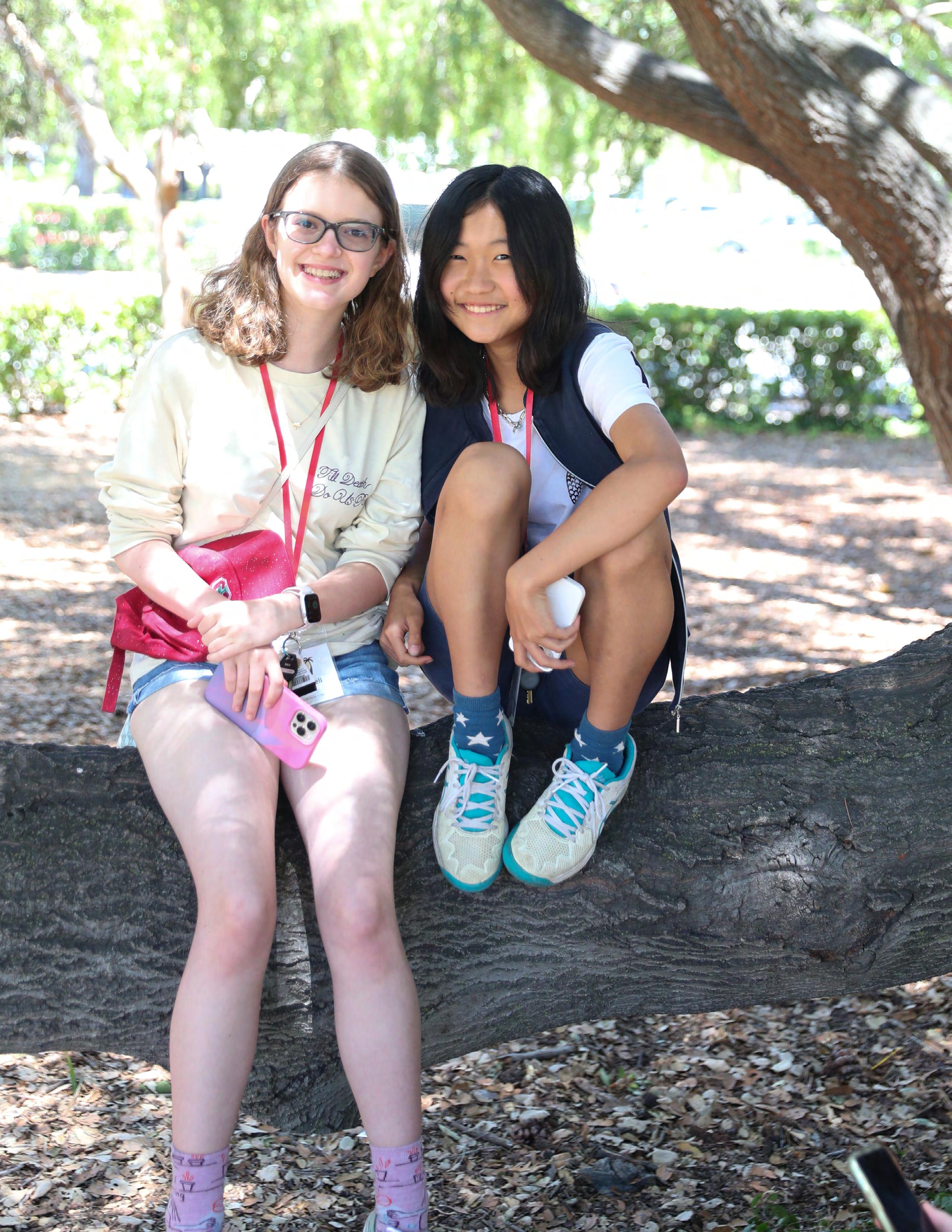Great StartUp to the Year!

















I hope it has been a fruitful beginning of the new academic year! I’ve certainly enjoyed meeting new Stanford OHS families, and hearing about recent classes and Student Life events.

The semester has gone quickly, and it’s already the midterm period. This is one of the busiest times during the semester, and I want to remind students that the Stanford OHS Community is here to help! Reach out to anyone you feel comfortable to talk to in the school community - friends, instructors, wellness counselors, etc. - when you need help or advice. I always appreciate the value of this incredible support network of Stanford OHS. Students, instructors, administrators, and families together make the amazing learning space that Stanford OHS provides.

After the current midterm semester, we will host Homecoming 2022 inperson on the East Coast. I am so pleased to have this great Stanford OHS tradition back in Boston! This year’s goal at Stanford OHS is to bring back student life opportunities that we had prior to the pandemic, as much as possible. I am looking forward to seeing many of you in our events inperson and online.

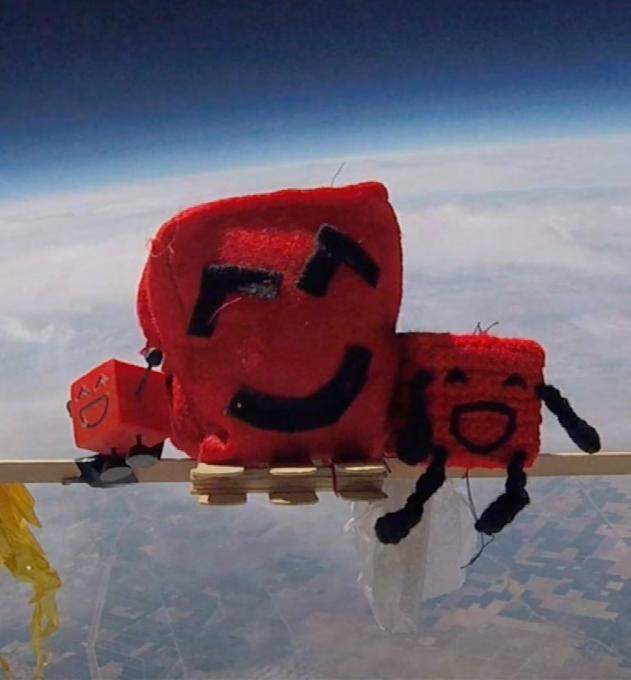
See you soon!
Dr. Tomohiro Hoshi Head of School
We, the Stanford OHSPA (Stanford OHS Parents/Guardians’ Association) Team, extend our best wishes and a warm welcome to all members of the Stanford OHS community. I have been a grateful Stanford OHS parent for over 10 years, with three full-time Stanford OHSers who have now graduated, and one remaining 10th grade student. This has been the intellectual journey of a lifetime! I have had the privilege of walking from room to room in my house, overhearing fascinating snippets of conversations as our esteemed instructors engage students in conversations concerning: Aristotle, Emily Dickenson, Linear Algebra, and Constitutional Ethics, to name just a few. My students have developed great skills in argumentative logic, frequently putting my parenting skills to the test, “Because I said so,” just doesn’t work! I can assure you, from experience, that through Stanford OHS, your students will develop both intellectually and emotionally, prepared to take their place in society as thinkers, leaders and innovators.
Our OHSPA Team is here to assist you as you pave the way for your students’ success. Please join our forum, the main
opportunity for direct communication with almost 700 families. Here you can ask quick questions regarding school policies, or engage in longer discussions regarding extended educational opportunities. Additionally, we host monthly presentations, bringing together instructors, staff, parents/guardians, and outside specialists to inform our parent/guardians on various topics of social and academic interest, all designed to aid you in your caregiving journey. We also work closely with Student Life and the Regional Coordinators to bring entertaining opportunities that will enrich Stanford OHS students and families through in-person, hybrid and virtual interactions. Our theme this year is Connections; through the above activities we aspire to bring our community of learners increased opportunities to connect with one another. Our events are posted on the Family Gateway, Pixel Weekly and TGIF. Please join us!
Best always,Adamou Fode Made, Computer Science Instructor

Lucio Mare, Core Instructor
Rene Van Lingen, Mathematics Instructor
Linghui Wang, Chinese Instructor
Meghan Kuhn, Assistant Director of College Counseling Alice Alden, Student Life Coordinator
Zachariah Neemeh, Core Instructor
Taylor Henkel, Associate Director of Residential Experience Kellye Smith, Middle School Academic Advisor
Estefany Arenas, High School Academic Advisor

Olivia Mastrangelo, Middle School Counselor Paige Johnson, High School Counselor Nicole Varveris, Director of Diversity, Equity, Inclusion, Belonging, & Access Emma Blush, Program Coordinator
Patricia Werneck de Freitas


Colleen Burson-Ryan Josh Beattie
Yael Isler
Adriana Campos Andrew Satanapong
To be included in the next issue, please submit your news to Stanford OHS Communications: csnapp@stanford.edu
Mihika D. (2026), was named in the Broadcom Top 300 MASTERS! The Broadcom MASTERS seeks to inspire young scientists, engineers, and innovators to solve the grand challenges of the 21st Century. The students, selected from 1,807 entrants, come from 35 states, Guam, and Puerto Rico. Top states include California (27%), Florida (12%), Texas (8%), Pennsylvania (6%) and Utah (5%).
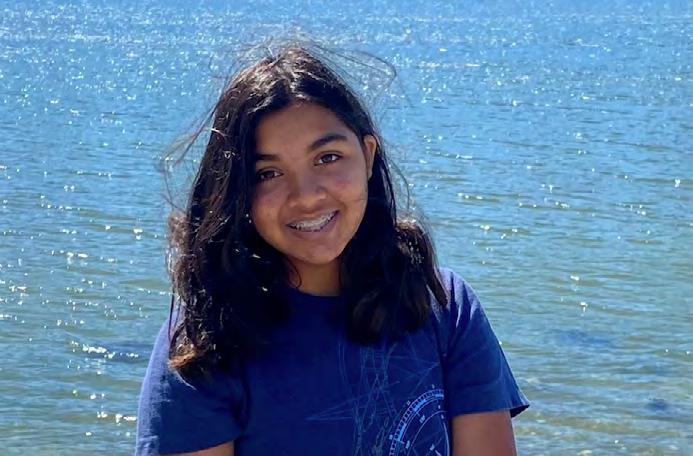
We are eager to get to know you!OHSPA Vice-President OHSPA Secretary Andrea Tiller Cynda Mullikin
The talented members of the Stanford OHS Ethics Bowl team facilitated an important and valuable Cyber Ethics discussion for our student body in September.


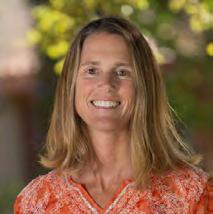
Members of the Ethics Bowl team, including Kaitlyn Z., Felicia L., Esther E., Audrey B., Siddharth P., and Kate N., approached challenging, controversial, and complex ethical situations in a thoughtful and meaningful way through introductions, modeling, questions, and by encouraging student participation. Ethical topics under consideration included real-life scenarios, such as the recension of Harvard admission decisions to a group of students who were found engaging in inappropriate social media activity. Additional scenarios focused on topics directly related to the Stanford OHS Code of Conduct on academic integrity, exploring the differences between student collaboration and resourcefulness, and cheating. The Ethics Bowl team members effectively illuminated the ethical decisions under consideration while also highlighting the various perspectives at play, allowing students to think through these complex situations ahead of time, and equipping them with strategies and approaches to use if they confront similar situations in the future. Student participation and engagement were robust, and could have lasted well beyond the timing of the event. A special thank you to the coaches, Will Beals, Christina Drogalis and Morgan Wallhagen. Watch the recording. Watch the recording.
The Student Government Executive Committee (ExComm) planned and hosted what is now becoming an annual tra dition: the Stanford OHS Survival Guide Seminar. This is a two-day seminar focused on a variety of topics, ranging from How to Make Friends at Stanford OHS, to a Core Crash Course. We are thankful to students Kabir G., Dashmi S., Aidan B., and Grey P. for their work on this helpful, community-focused sem inar. We look forward to more events like this in the future!
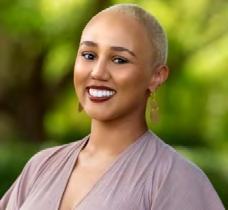 by Nicole Varveris
by Nicole Varveris
As a result of the recently completed NAIS Assessment of Inclusivity and Multiculturalism (AIM), Stanford OHS introduced the Director of Diversity, Equity, Inclusion, Belonging and Access (DEIBA) role in 2022-23. As DEIBA Director, my work will focus on creating a roadmap towards executing the schools strategic DEIBA goals; instituting regular DEI-related training for staff, expanding inclusive pedagogy efforts, implementing resources to support and retain underrepresented staff, increasing opportunities for international family engagement, introducing student affinity groups, increasing longevity for DEIBA related clubs and circles, prioritizing and allocating resources to support access for students of all socioeconomic levels, further supporting students with disabilities and documented needs and recruiting and retention of underrepresented students.
This year we introduced the Stanford OHS Student Diversity, Equity, and Inclusion (DEI) Committee, made up of student leaders from identity affirming clubs and circles. The Student DEI Committee will serve as the student voice for the school’s DEIBA goals and efforts. Amongst other things, this group will help create monthly community Dine & Dialogue (D&D) events during which students and staff gather to learn about and discuss DEIBA related topics and themes. In September the Stanford OHS LatinX Alliance and Spanish Club hosted a D&D for Hispanic Heritage Month, and the Stanford OHS Gender Sexuality Alliance is preparing to host a D&D for LGBTQ History Month in October.
Other DEIBA related projects this semester include; launching the Stanford OHS Diversity, Equity and Inclusion webpage in collaboration with the Admissions and Marketing Team, introducing the “Belonging” section to the Pixel Weekly which highlights the diversity within the Stanford OHS community and spotlights identify affirming events, and preparing for a group of instructors and staff to attend the annual NAIS People of Color Conference in San Antonio, Texas.
StartUp is a culmination of Stanford OHS meetups all around the world to kick off the new school year. We are thankful to OHSPA leadership and all of the Regional Coordinators for volunteering their efforts to bring together Pixels in this way! This year’s 14 StartUp events took place on August 2628, 2022. Families gathered together in-person in California, Washington, New York, Illinois, Colorado, and Texas. Online events included families in Japan, South Korea, Sakhalin Island in Russia, Australia, the Arabian Sea region, Europe, Africa, Florida, Caribbean, and South America, the South Central United States, Hawaii, China (PRC), Hong Kong (SAR), Taiwan (ROC), and Mongolia. Stay tuned for more information from Regional Coordinators about continued meetups throughout the year!

StartUp in Capitola! Dozens of Stanford OHS families, staff, and instructors came together on the beach for fun and games in the California sunshine!

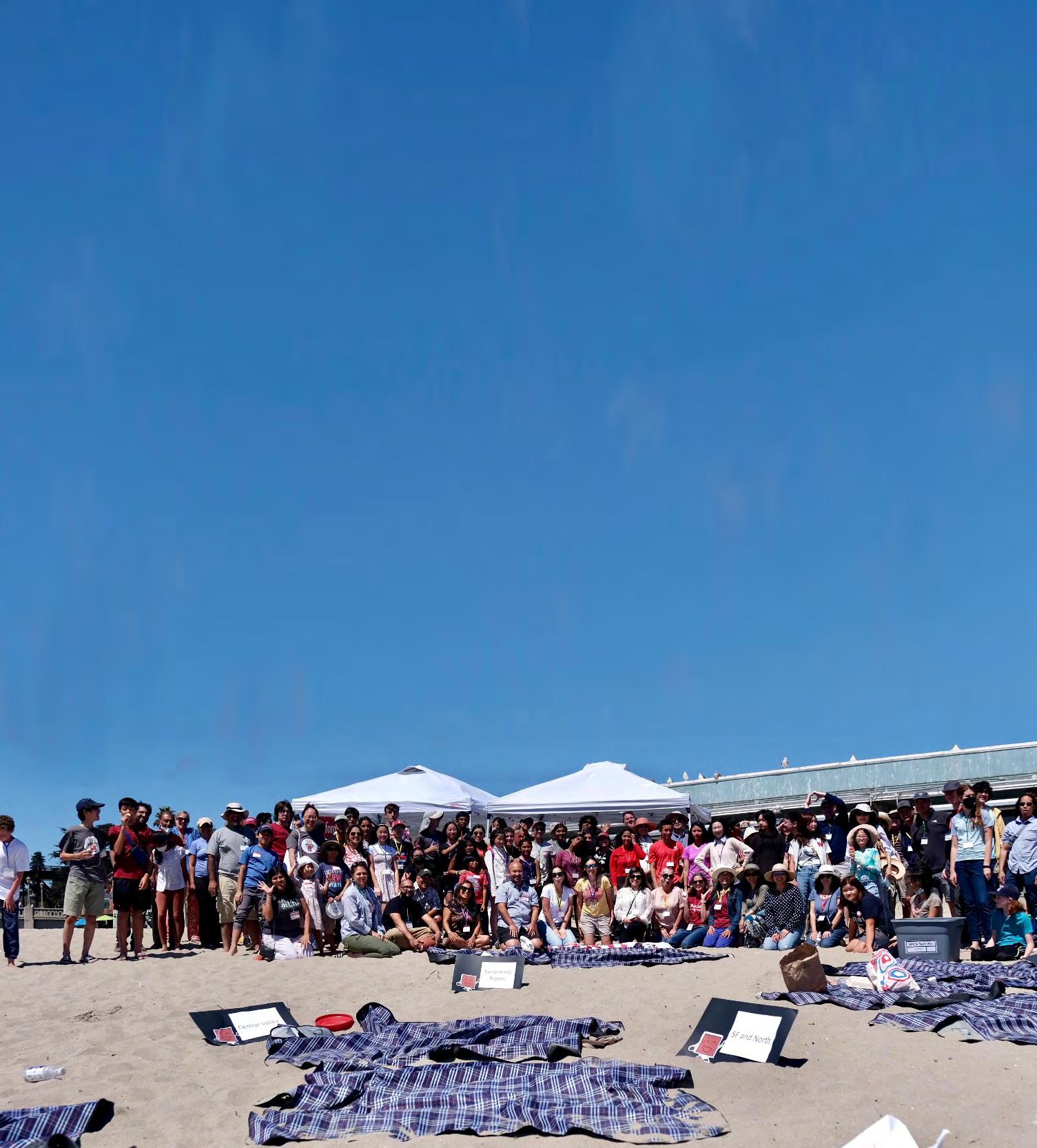
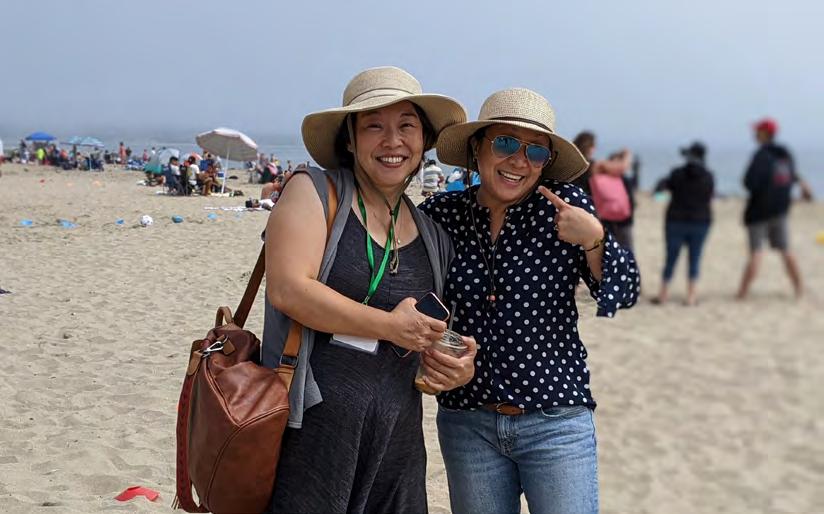

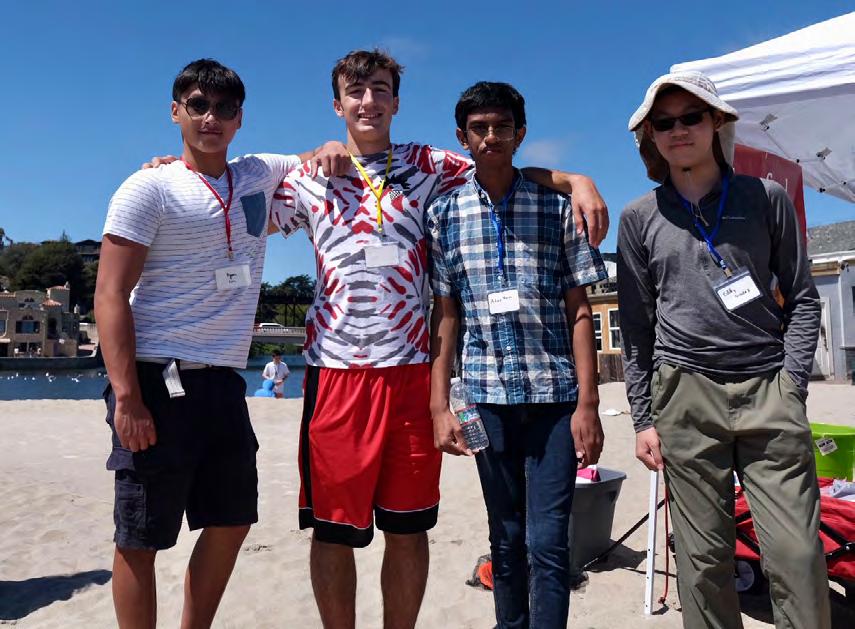






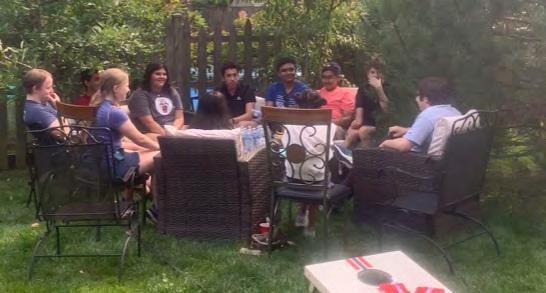

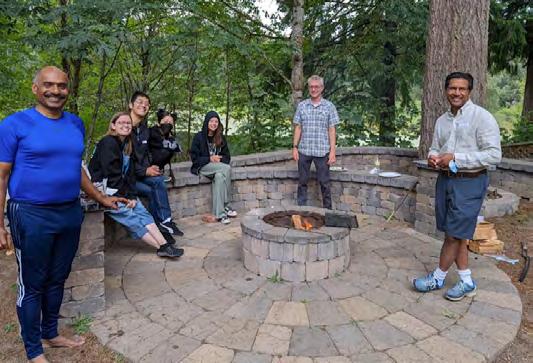
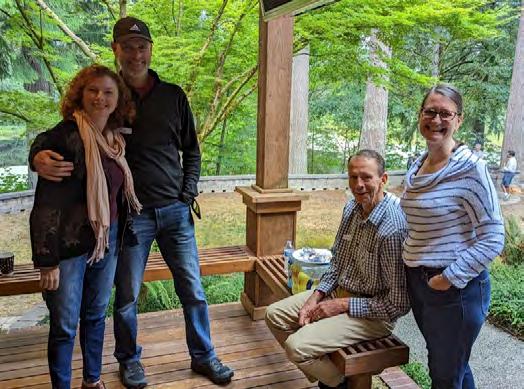

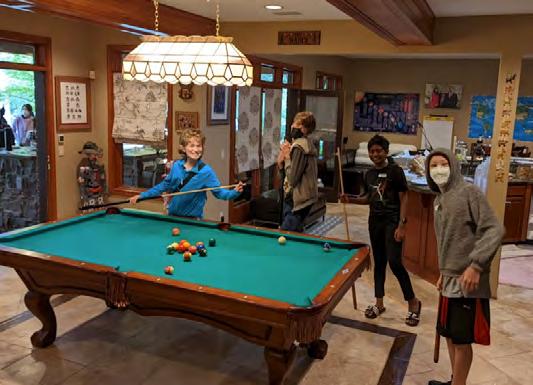


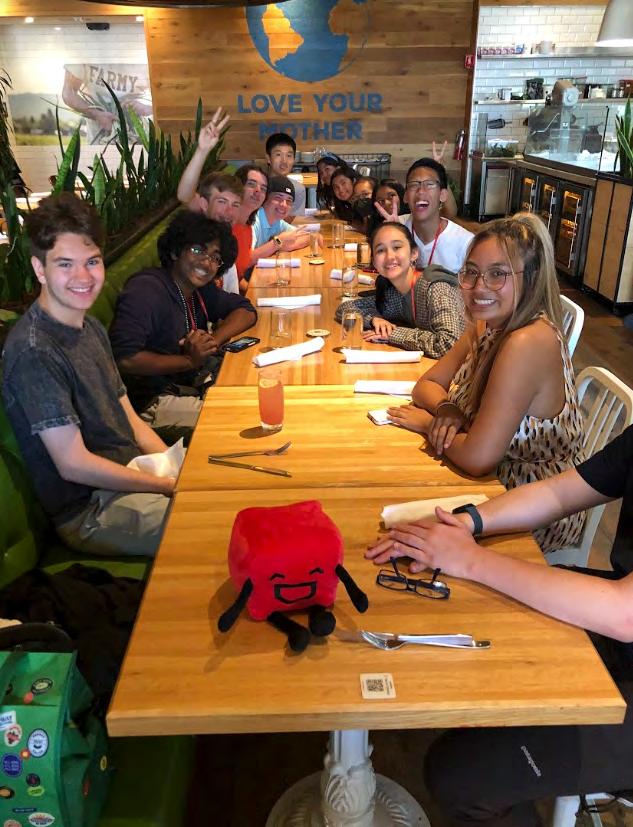
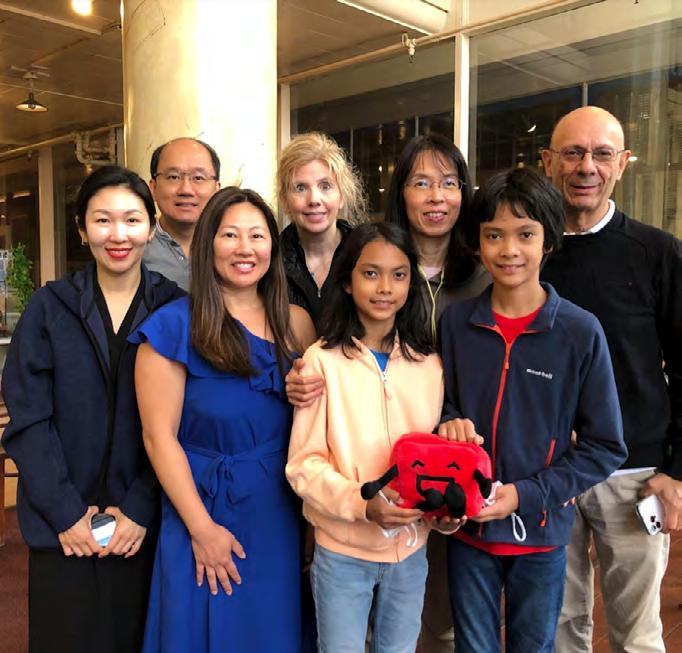



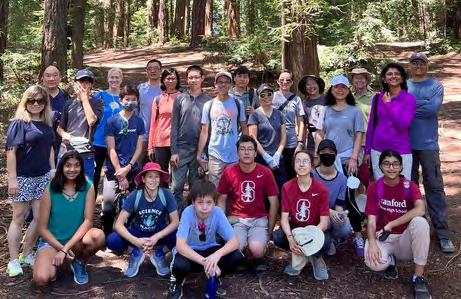

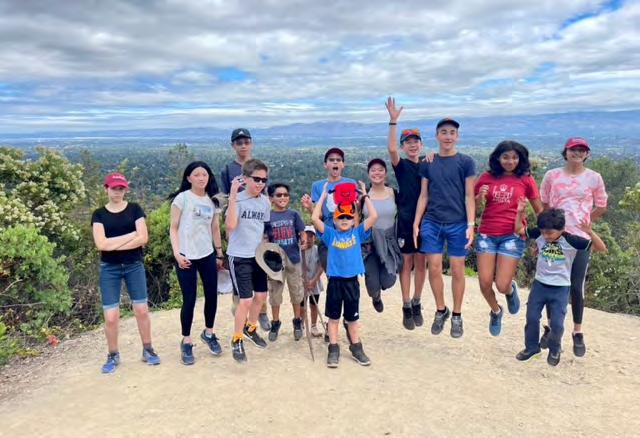



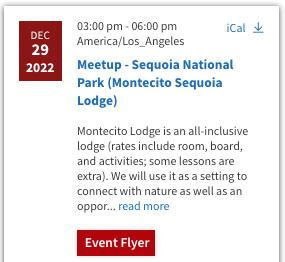
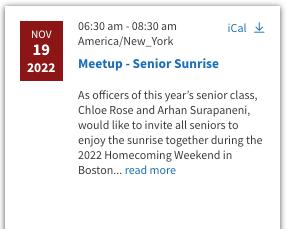



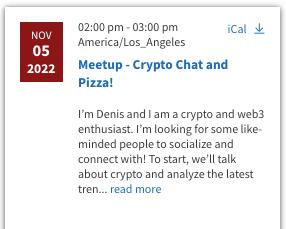

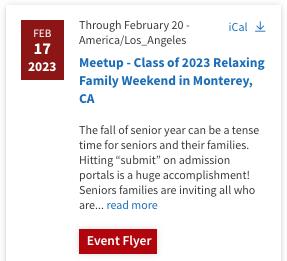

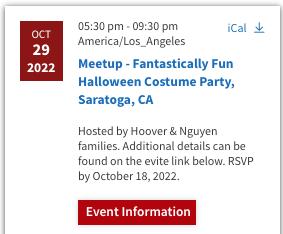
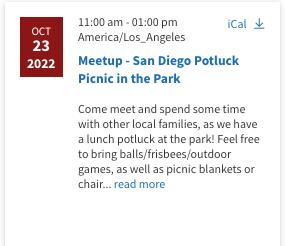
Homecoming is returning to Boston, MA for the first time since 2019! Though last year’s Homecoming was in Monterey, CA, this event has historically taken place in Boston since many Stanford OHS students already attend MIT Splash. This is also the only schoolsanctioned in-person event on the East Coast each year.


Besides MIT Splash, Homecoming includes additional fun events like the Homecoming Dance and Flag Football game. There will still be many online events for those wishing to connect online with others at home, and hybrid events where the online and in-person attendees can mingle together. Thank you to the Stanford OHSPA and other community members for adding additional meetups throughout the weekend to allow for even more fellowship and engagement!
Check the Homecoming
Family Gateway page for complete information, and email ohsstudentlife@ stanford.edu with any questions.


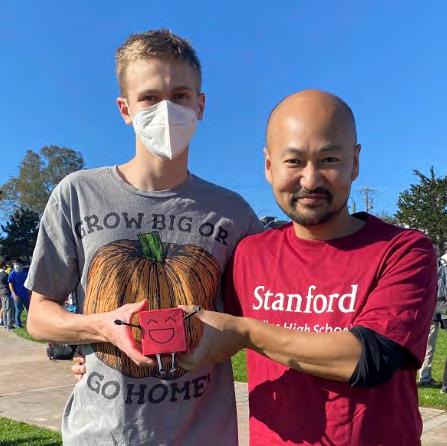


Here at Stanford OHS Student Government, we have fve boards, four pairs of reps, and a triumvirate, led by a pack of Juniors, were chosen by students to make this year as amazing as it can be! Each group has its own projects and plans for the year, but all joined Student Government with a common goal in mind: to support the students at Stanford OHS, whether that be academically, socially, psychologically (somehow), or any other way.

Now, for a word from each one of the elected members of Student Government, we cede the senatorial-turned-imperial floor to our boards.

First and foremost, the Board of Communications strives to communicate effectively with the student body and keep everyone informed through newsletters such as the (hopefully fun-filled!) Monthly Marshmallow. We will hope to con tinue to connect the student body through events (such as Upperclassmen Q&A and College Evenings). We’ll be fleshing out the survival guides to give students an easy-to-access resource covering everything from tech tips to specific class summaries. The BOC will also be running our podcast, Stanford OHS Through the Microphone, which will interview stu dents, Stanford OHS alumni, and instructors alike for their suggestions for Stanford OHS students. We really hope we’re able to support you through this year of Stanford OHS and make communications as enjoyable as possible!
Salutations pixels! BOE is excited to announce that this year we will be running events. That’s it really. We’ll have movie nights, karaoke, hot seats, and all sorts of other events! Please remember to fill out the forms we’ll be sending in the Monthly Marshmallow and Pixel Weekly so ALL YOU STUDENTS can vote on what events we run next!!
The Board of Arts aims to provide Stanfoed OHSers with more opportunities to express their artistic creativity, carrying on the BOA’s legacy. Efficient communication is key, so we want to keep the Stanford OHS community involved through monthly newsletters and a regularly updated blog to make sure they have all the resources they need. By hosting monthly themed events and workshops and having monthly artist spotlight based on nominations, we are working to make OHS a fun, supportive place for our wonderful community of creators.

Hi everyone! Your Board of Club Relations is excited to support our clubs and circles this year! We will create a club and circle calendar for Fridays, so that you know when all the meetings are. We will also run club and circle spotlights and workshops. We are so excited to make your experience this year amazing with our wonderful clubs and circles!

Hey Stanford OHSers! This year, the Board of SASS is planning on hosting a wide range of events, from Course Tips Events (for MS, HS and Uni-level courses!) to Study Tips events (especially near exams!) and Q&A events with alumni! In addition, we’ll be starting up the Board of SASS blog again and updating it with important logistical information, such as test centers, proctoring services, and scholarship opportunities. We’re super excited for the new school year, and we hope to see you at a future event!



As middle school representatives, we hope to foster our humor and love as a community through spot lights and memorable events. Each month, a trait is decided upon, and we will send out a nominations form through a monthly newsletter. At the end of the month, we will give the winner a shoutout in an email and in bulletin. Along with spotlights, we will host monthly events and study town halls!


Hey Pixels! We are so excited for all of the awesome events this year! If I were to name one goal that we want to accomplish it’d be to host and facilitate an environment that encourages connections and makes a positive impact on friendships in our amazing community here at Stanford OHS! This means spectacular events, cool competitions (but not really competitive), and most of all having great commu nication between the student body and the Student Government. We are jumping in our seats with lots of plans for the next few months, and we can’t wait to share them with you.
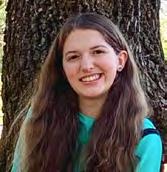
This year, we are planning to include a competition among 4 sophomore teams (where students win points based on participation in fun activities) as well as a wide range of different online events to encourage a greater sense of community and connection. These events will range from game nights to Kahoots to to Sophomore Speaks. Furthermore, we want to increase sophomore representation at in-person gatherings and make sure that sophomores get plenty of academic help through tips, events, and more (10th graders are often forgotten between 9th graders new to high school and upperclassmen prepping for college applications). To increase transparency, we will consistently send out grade-wide emails/polls and check our suggestion box. We’re excited for an amazing year with all of you!
Hello people! Your junior class triumvirate here! Now that we’re elected, bringing more events, both academic and stress-relieving, to the Class of 2024 and the whole school is at the top of our list. Along with that, we will deliver easy-to-find documents and files, and academic resources, as well as hosting regular events. We want to organize study sessions for classes, and prepare everyone for the years ahead with events geared towards college prep! Live long and stay Class of 2024.
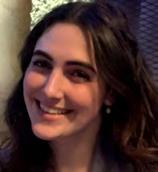

We are super excited to be your Senior Class Representatives! As an online school, being seniors can be very frustrating. We miss out on things like senior sunsets, social events, and all the other fun activi ties that come with a brick and mortar school. Nonetheless, we can have our own special type of fun! We want our senior class to enjoy our last year, while also balancing the looming college apps that we dread so much. This includes an assortment of game nights, movie and tv show nights, college appli cation speakers, senior merch, and so much more. We look forward to making senior year the best one yet!

We are so excited to be your Student Body President and Vice President this year! Our job consists of listening to the students and making sure that Student Government keeps this in mind while making decisions. Some of the things we want to improve this year include communication within SG and be tween SG and the Student Body, as well as increasing participation in SG events and activities!
And that’s a wrap! Your elected representatives are hard at work, making sure that your school year is the best it can be. IRL events, online assemblies, club meetings, academic resources, and grade-level entertainment are all planned with the support from students, so do not hesitate to contact us with any comments, suggestions, questions, or concerns you have.
Kabir G.: kabir108@ohs.stanford.edu or live:kabirg108 on Skype Dashmi S.: dashmi@ohs.stanford.edu or live:dashmi on Skype


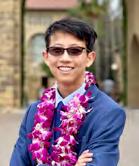
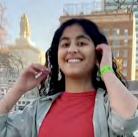
 Kabir G.
Alex H.
Suhavi K.Lexi M.
Chloe R. Dashmi S.
Brendan G. Peter O. Arhan S.
Veronica H.
Hannah B.
Rheyn J. Kate N.
Kabir G.
Alex H.
Suhavi K.Lexi M.
Chloe R. Dashmi S.
Brendan G. Peter O. Arhan S.
Veronica H.
Hannah B.
Rheyn J. Kate N.

The Observer, Stanford Online High School’s official student-run newspaper, is a lively community of 30+ student editors and writers, publishing articles on school and world news, science and tech, arts and culture, and more. Here are some reflections from Observer editors and staff writers on their highlights of and takeaways from their Observer experience.
Since joining the Observer, I have had the privilege of working and engaging with some of the most talented student writers! Not only have we published numerous groundbreaking stories—for example, The Infusion Clinic: Where Children Seek Care and Comfort, by Amelia Z., Eye of the Hurricane: Student Life During the Pandemic, by Isabella H., and Confronting the Toxic 996 Work Culture, by Eddy L.—we have also consistently connected to brainstorm ideas, build team synergy, and foster cross-team collaboration. Together, we were able to publish over 60 articles in the 2021-2022 school year alone, and we hope to continue building upon this success for the current year. As I embark on my second year as Co-Editor-in-Chief for the Observer, I could not be prouder of our team’s passion, creativity, and drive. We hope you’ll support us throughout the year!
My favorite article that I have written is an article called How to ‘Win’ the Olympics: Doping with Trimetazidine. This piece,
published in early 2022, is a recount on the Russian Figure Skating doping scandal in Beijing. Following Russia’s winning performances in the team event, it was reported that 15-year-old Russian skating star, Kamila Valieva, tested positive trimetazidine (TMZ), a drug traditionally used to treat heart-related conditions.
As a figure skater myself, this article was particularly important to me because doping in figure skating is not a first, especially for Russia. I felt that in this context, it was crucial to outline the science behind TMZ and its potential performance enhancing qualities. After all, athlete integrity is essential to the foundation of any sport.
When I came to Stanford OHS in 10th grade, I was drawn to the Observer because of its community. After attending the first club meeting, I felt that the other student participants and Ms. Shields were really welcoming and supportive, and I wanted to immerse myself in this
environment. After serving as Senior World News Editor in 10th grade, a staff writer in 11th grade, and now Co-Editorin-Chief this year, I can now say that my original characterization of the Observer community was completely true! In the beginning stages of my Observer involvement, I received lots of support from other editors and staff writers, which helped me improve my understanding of journalistic writing as well as adjust quickly to Stanford OHS. And as an editor, I’m able to see at a higher level the amazing articles that our staff writers are working on and the efforts that editors make to support writers. The Observer has enriched my Stanford OHS experience greatly, and I’m so proud of the work we do!
When I first joined Stanford OHS, I applied to the Observer for the opportunity to spend time researching school events, talk with the people running them, and improve my writing skills. As a beat reporter, I was able to significantly....


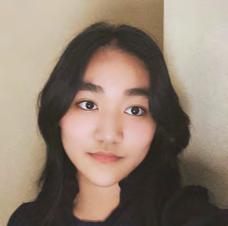
increase my knowledge base! When writing about the research colloquium, I learned about STEM fields that I was not familiar with. Through my writing, I had the opportunity to simplify the complex research conducted by Stanford OHSers and make it more accessible to everyone at the school. Through my involvement with the Observer, I learn a lot about our amazing community and share it with the rest of the school. I decided to become an editor for the Observer to gain insights into the publication process and upgrade my journalistic writing skills from authoring articles to critiquing them thoughtfully and poignantly.
When editing for my writing team, I give the article a quick read through and understand the gist of what the staff writer is trying to convey. Next, I re-read and provide edits based on the journalism standards and style we’ve learnt over the years or an occasional grammatical mistake. I also consider and suggest potential ways in which I think a writer could convey the idea better or get their point across more clearly. Working with my writing team has been an absolute pleasure. All writers on my team have really been on top of it, always interacting with me, making sure I’m aware of where they’re at and if they need any help throughout the process. It has been a really rewarding experience to take the knowledge that I have gained from the Observer and use it to support members of my team!
The Observer does a remarkable job of shedding light on inschool and global news by looking at stories through a different lens. Editors and staff writers are encouraged to write stories they are passionate about without the fear of being judged or ridiculed. As a result, the Observer has featured a diverse myriad of articles, with students writing about climate change to Taylor Swift’s Red Album. However, diversity is one topic I would love to see covered more heavily in the student newspaper. Stanford OHS and the world are full of diverse people with unique stories, and our job as journalists is to uncover
them. Therefore, it would be wonderful if the Observer could dedicate a column to diversity, equity, and inclusion and let it serve as a reminder to readers that the journey towards equity is never over.

I’ve learned many invaluable lessons while writing alongside the Stanford OHS Observer’s skilled students. They’ve helped me develop my interest in writing and opened the world of journalism to me. For that, I’m forever grateful. However, if I had to pick one lesson, it would be to experiment with activities you feel uncomfortable pursuing. To be honest, I initially joined the Observer because a friend and I wanted to be in the same homeroom. I never considered myself a strong writer and was not expecting to fall in love with journalism. But, as I started experimenting with my writing style, I found a beauty in uncovering unheard voices I would’ve never discovered if I didn’t join the Observer. This is all just to say that even if you are dead set on pursuing a subject, don’t think you can’t find delight in others. Who knows, maybe you’ll find another discipline that sparks your interest!
A major opportunity I think can be gained from participating in a student news publication is the ability to become directly involved in crafting stories about the school community and see firsthand the stories other students have interest in writing. We have a wide variety of articles that have been published here at the Observer, from movie reviews to articles about STEM developments to events that have happened at the Stanford OHS, and I think that it’s really wonderful to be able to see how those stories are created. Another opportunity participating at the Observer has given me is the ability to diversify my writing styles. Over the past two years, I’ve not only been able to write my own articles about school changes, but also learned how to write articles reviewing albums and books, as well as been able to help edit other students articles and had the opportunity to help them to revise those articles.
One of the most valuable lessons I’ve learned while working on a student-run newspaper is the importance of communication and being able to reach out to other people. When writing an article, one of the first things you have to do is take the time to request or schedule an interview with your sources in order to ask them questions. Similarly, when editing another person’s article, you also have to be ready to communicate with them and send them messages. Being able to partake in the article production process here at the Observer has really taught me to branch out and take the initiative when it comes to communicating with others when previously, I would have been hesitant to do so.

My favorite article written would be the one titled “Quantum Batteries”, as it shows a potential solution to one of the most challenging problems that we face today: energy management. The proposed quantum battery works by using the states of subatomic particles to connect similar particles with one another and to trap energy in these states. I have always been very interested in emerging scientific phenomena and inventions that could positively change the world we live in, and my interest in this field inspired me to write the article. I also share my passion for science through my YouTube channel, Stem Geeks, which I’ve developed with my twin brother, Bharat N. (who is also a Stanford OHS student).
After coming up with a topic, I typically do a lot of reading and research (via magazines such as Science, Scientific American as well as blogs and articles on the Internet) to understand more about it. This particular topic, involving a relatively new technology, was harder to find information on, and so I had to use the Stanford library to access related information. After reading in-depth about the topic, I start my article with an example to show how the new technology could solve a problem in the reader’s daily life. This helps the reader to relate to the topic better. I then describe how the technology works and give a broader picture as to how it could potentially change our world. In researching and writing each article,

I learn a lot about a new technology or scientific phenomenon and its practical application. I also learn how to write about a relatively complex topic in a way that could be understood and appreciated by a reader who is only tangentially interested in it.



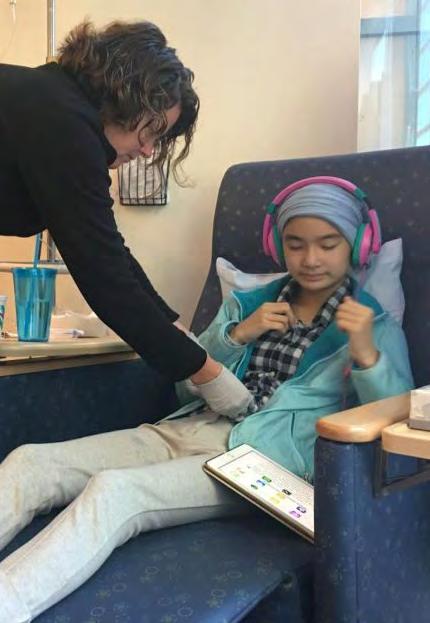

I joined the Observer in 9th grade, served as a writer my first year, as Co-Editor-in-Chief my second year, and am back to being a writer this year so I can explore writing articles of my own again. I enjoy both roles immensely and gain valuable lessons from both.



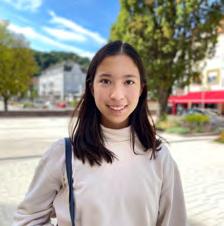
I’m so proud to see the new improvements made every year behind the scenes by our wonderful team. Beyond writing improvement, there’s many communication skills I learn from journalism, such as how to make an interview or conversation more casual and insightful. Even before joining the Observer I loved writing and telling stories, and my favorite part of the Observer is the stories we help show to our community. Because of Stanford OHS’s vibrant community, there are so many unique and personal experiences to share, and I can’t wait to find the stories just waiting to be told.
I joined the Observer during my first year at Stanford OHS and was especially struck by the level of both student participation and professionalism in the club — everything is open to discussion and improvement, allowing students to claim responsibility over their own personal passion projects within the paper itself, but the final product never seems haphazard or recklessly cobbled together from disparate scraps of contributions. Since then, as I have grown more acquainted with the formatting and publishing, one of my favorite aspects of working with the Observer has been creating this elegant, fully-formed product. The articles themselves are another highlight, both writing and editing them. It is fantastic to have an outlet for my own writing as well as motivation to undertake projects on a regular basis, but I may even prefer editing. In addition to giving me the chance to read and discuss many excellent pieces, I have found that editing is by far the best way to improve as a writer.
Dissecting, warping, and rearranging language helps me to find the boundaries of what works, what doesn’t work, and what technically works, but could be better.
I really like writing profiles as I get to know the wonderful Stanford OHS community in the process. I usually make friends with the people I interview which is definitely a bonus. My profile on Maddy M. is one of my favorite articles written so far. In the process, I got to know Maddy and writing the article taught me how many things were possible. I also collaborated with Maria Lim to write What Do Stanford OHSers Think? The Biden Presidency and I loved doing that. We wrote this during the US elections. It was interesting to survey and gather Stanford OHSers’ opinions on the election as the community is made up of people from all round the world. While some people living in the US expressed concern on how their lives would be directly affected as laws might change, international students talked more about how it would affect relations with their country.

The Observer has played a pivotal role in shaping me as a student, friend, and citizen of the universe. I joined my sophomore year with little idea that I would fall in love with journalism and the multi-faceted approach it takes to life and its experiences. Through it, I have the privilege of not only sharing my thoughts and words with our beloved community, but also unearthing inspiring, unique stories that create ripple effects extending far beyond what I can visibly see. One of my most favorite pieces I have written was a short blurb about human trafficking. It shook me to the core. The depravity and despair that infused this horrible “commercial” system fed a flame I have always carried along with me - a passion for the underserved, neglected, and abandoned. I cannot imagine life without the Stanford OHS Observer and dare you to try it - it may very well change your life.

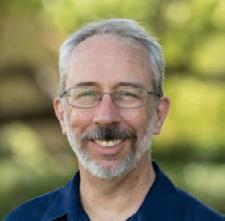
The Stanford OHS Counseling Office is available throughout the school year to support your learning, growth, and success as students at our school. We are here to assist you with goal setting, time management, dealing with stress, enhancing your personal wellness, and many other topics. One concern that may be especially relevant at this time of year is handling exams, which could include studying, preparing on the day of the exam, and maintaining a positive state of mind during a major test. Whether you have midterms coming up soon or may be looking ahead to final exams, here are some tips to consider.
P l a n a h e a d B e i n g s u r p r i s e d b y a m a j o r e x a m c o m i n g u p i n a f e w d a y s i s n o f u n ! A s y o u p l a n o u t y o u r w e e k a n d y o u r s e m e s t e r , p u t d a t e s o f m i d t e r m s a n d f i n a l s i n y o u r c a l e n d a r a n d e x p e c t t o s t a r t s t u d y i n g w e l l i n a d v a n c e , p e r h a p s t w o w e e k s o r m o r e b e f o r e e a c h e x a m d a t e G e t t i n g a n e a r l y s t a r t w i l l a l l o w t i m e t o f u l l y u s e a n y s t u d y g u i d e s , p r a c t i c e t e s t s , r e v i e w m a t e r i a l s , a n d o t h e r r e s o u r c e s p r o v id e d b y y o u r i n s t r u c t o r I t m a y b e h e l p f u l t o d o s o m e a m o u n t o f a c t i v e r e v i e w w i t h a l l t h e m a t e r i a l c o v e r e d b y t h e e x a m , w h i l e a l s o s p e n d i n g e x t r a t i m e o n t o p i c s y o u f i n d u n u s u a l l y c h a l l e n g i n g o r w h i c h y o u r i n s t r u c t o r h a s h i g h l i g h t e d a s e s p e c i a l l y i m p o r t a n t
A v o i d t h e t r a p o f t h e a l l n i g h t s t u d y s e s s i o n b e f o r e a m a j o r t e s t , a n a p p r o a c h w h i c h w i l l v e r y l i k e l y g i v e a d i s a p p o i n t i n g r e s u l t . I n s t e a d , i n v e s t s o m e e x t r a a t t e n t i o n i n t a k i n g g o o d c a r e o f y o u r s e l f o n t h e d a y o f t h e e x a m . G e t t i n g s u f f i c i e n t s l e e p , e a t i n g w e l l , a n d m a k i n g t i m e f o r s o m e e x e r c i s e c a n a l l h e l p y o u b e a t y o u r b e s t w h e n t h e e x a m b e g i n s
F o r m a n y o f u s , s i t t i n g f o r a m i d t e r m o r f i n a l e x a m m a y b e s o w o r r i s o m e t h a t w e h a v e d i f f i c u l t y f u l l y d e m o n s t r a t i n g t h e h a r d w o n k n o w l e d g e w e h a v e a c q u i r e d T h e r e a r e m a n y t ec h n i q u e s s u c h a s m i n d f u l n e s s , b r e a t h i n g e x e r c i s e s , a n d p r o g r e s s i v e m u s c l e r e l a x a t i o n t h a t c a n h e l p w i t h m a n a g i n g s t r e s s d u r i n g a t e s t I t m a y a l s o b e b e n e f i c i a l t o r e m i n d y o u r s e l f t h a t y o u h a v e p r e p a r e d c a r e f u l l y a n d t h o r o u g h l y , a n d y o u a r e r e a d y t o g o !
To discuss exam preparation in more detail, please reach out your counselor or to the Counseling Office. We will be happy to work with you to develop a personalized strategy for handling exams or for address ing any issues that arise in your studies or extracurricular life.

This will be the first time the event has not been online since January 2020.
We look forward to offering a full day of get-to-know-you activities, student activity courses, parent events, and the Winter Formal dance.
The detailed schedule will be shared in November, when tickets go on sale.

I am honored to invite you to participate in this year’s campaign, and I am very grateful for the continued support of the Stanford OHS community. The Annual Fund is so important as it creates more opportunities for students, instructors, and staff by:
 by Tomohiro Hoshi
Head
by Tomohiro Hoshi
Head
University health and safety guidelines. The Annual Fund helps keep these costs down so more students can attend.
Click here to see many examples of other incredible ways we have used Annual Fund donations to support our community.
• Supporting Professional Development: The exceptional teaching team and our supportive staff are the foundation of our school. The Annual Fund ensures sufficient resources for instructors and staff to attend virtual and in-person conferences, and events for their ongoing pursuit of academic and professional expertise.
• Promoting Curriculum Innovation: The Annual Fund provides the resources to further evolve the extraordinary curriculum our students experience. It allows instructors time and materials to create new courses, further develop existing courses, and collaborate across disciplines to generate new ways for students to learn and grow.
• Amplifying Student Life Opportunities: The Annual Fund helps strengthen the Stanford OHS student community through financial support for clubs, competitions, guest speakers, and events from Pixel Festival to Prom. Due to the pandemic, in-person event operations require more resources than prior years in order to follow CDC and Stanford
The Stanford OHS Annual Fund is a wonderful opportunity for all of us in this worldwide community to unite together with the same goal of supporting our brilliant students, excellent instructors, and supportive staff. To highlight this unique aspect of the Annual Fund at Stanford OHS, the sole campaign goal this year is 100% participation in the community. You can read more about the campaign and hear from our committee co-chairs in the Annual Fund brochure, which you will also be receiving this week in the mail.
An active and supportive community is essential to the success of our school. All donations, at any level, will be meaningful to the entire school community, and will be used during this academic year. We sincerely hope to achieve the goal of 100% participation.
Please join me in making a gift to the Annual Fund today! To do so, visit this site (make sure you click “continue as guest” as your SUNet login will not work). For other options to donate, please view this document. Stanford Pass account to make a donation. For other options to donate, please view this document
5 I am reading (and enjoying very much!) Jonathan Strange and Mr. Norrell, by Susanna Clarke. The friend who recommended it to me is into fairy tales: but the kind with faeries as they were originally envisioned, which can get disturbing. This book has fairies as well (the disturbing kind), but it is set in 19th-century England around the time of the Napoleonic Wars. It reads a lot like Jane Austen and is very fun.

5 I am reading Braiding Sweetgrass, by Robin Wall Kimmerer. It’s a series of reflections and short essays on the intersection of scientific and indige nous ways of looking at and under standing the roles of plants and their allies. Chapters on maples, redwoods, lichens, and cedars are changing the way that I look at the world around me.

5 I am reading Umberto Eco’s The Name of the Rose, both because it is an assigned book at my local library’s Classics Book Club and because it was recommended to me by my former student, Alex Miller ‘22. It is a historical murder mystery set in a monastery in Italy in 1327, and Alex recommended it to me because of how it intersects with a lot of the texts in Wonders and Sublimity (erst while AP Lit). It really resonates with Strange Case of Dr. Jekyll and Mr. Hyde in some very cool ways!
 Dr. Jim Doherty Science Instructor
Dr. Jim Doherty Science Instructor
5 I recently read Saving Us: A Climate Scientist’s Case for Hope and Healing in a Divided World by Katharine Hayhoe. I wanted to find out more about Hayhoe after seeing that she was named chief scientist at The Nature Conservancy. Her book is basically a “how to” for talking with family/neighbors about climate change. I enjoyed it! I love that she advocates starting conversations with people of different faiths and po litical views. Probably the coolest thing was that she actually shared so many stories where she had real difficulty engaging with people about climate in her own life; and in most cases she showed that it was possible to find some common ground.
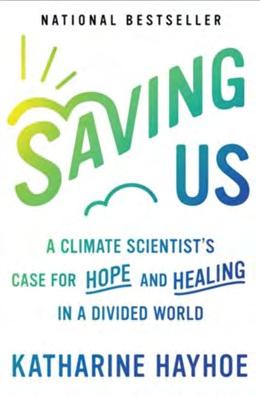 Kalee Tock Science Instructor
Dr. Claire Dawkins English Instructor
Kalee Tock Science Instructor
Dr. Claire Dawkins English Instructor
5 This summer, my most favorite book by far (if you haven’t already heard me yammer on about it) was The Woman who they Could Not Silence by Kate Moore. An incredible true story about a Elizabeth Packard who in the 1860’s was committed to an “insane asylum” by her husband and how she fought back, kickedbutt and helped make some real changes. You wouldn’t think it, but it was a page-turner!

On the fiction side, I read the first two books in the series called The Thurs day Murder Club by Richard Osman. I just got book three, and plan to start it soon. It is about a quirky group of octogenarians who solve murders. Very fun!

5 My favorite fun read this summer was The Book of Form and Emptiness by Ruth Ozeki. I picked it up brows ing the staff recommendations at Powell’s Books in Portland, Oregon. After the tragic death of his father, a young boy starts to hear objects talk ing to him and his mother becomes a hoarder. Eventually, the book itself starts talking to you, the reader. It is beautifully and innovatively writtenI just couldn’t put it down.
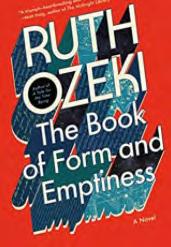
5 Mathematics for Human Flour ishing by Francis Su. It’s adapted/ex panded from the farewell address he gave at the end of his term as presi dent of the Mathematical Association of America, and makes the case for the study of mathematics as an inclusive, rewarding experience that can benefit every individual and the society in which they live . It’s very readable and engaging, and doesn’t require mathematical sophistication to be enjoyed.

5 Last year, I based my Advanced Topics in Philosophy course on Bernard Suits’s 1978 book, The Grasshopper, and earlier this year I published a journal article about it. My interest in Suits, however, seems to be part of a wider trend. The American Philosophical Association gave its 2021 book award to Games: Agency as Art, by C. Thi Nguyen. Dr. Nguyen was the keynote speaker at the Stanford OHS R.A.D. Festival in September, and his book takes Suits’s philosophy of games as its starting point. Furthermore, a bigname press has finally published Return of the Grasshopper -- the sequel Suits wrote before his death but could never get published. After 40 years of waiting, my copy is sup posed to arrive tomorrow.
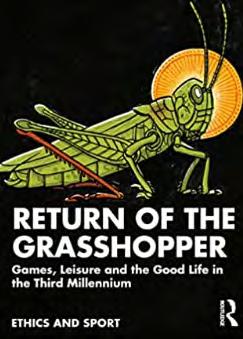 Ted Alper Mathematics Instructor
Dr. Joseph Rees Core Instructor
Dr. Micah D. Tillman Core Instructor
Paige Johnson High School Counselor
Ted Alper Mathematics Instructor
Dr. Joseph Rees Core Instructor
Dr. Micah D. Tillman Core Instructor
Paige Johnson High School Counselor
 Mathmatics Instructor
Mathmatics Instructor
For the third year in a row, Stanford OHS students joined a hackathon during the Labor Day weekend. The hackathon was organized by the Stanford OHS Girls Can Code Club whose club leader is Kaitlyn Z., ‘24 and club sponsors are Britta Buehne mann, Lisa Atluri, and Diem Nguyen (all from Stanford OHS Technology Team). Special thanks to mentors Nicole Varveris, Director of DEIBA and Revathi Sundaresan, Mathematics Instructor and judges Rajeev A. and Christian T. who devoted their time during the Labor Day weekend to help and support this third Stanford OHS Hackathon competition.
It was a successful and inspiring hackathon with 18 participants, including middle and high schoolers from U.S. and international time zones. Students worked solo, or in teams to develop a solution focused on a problem in healthcare and/ or related to the medical field, and following two different guidance tracks—Machine Learning & Health care or Clinical & Healthcare. We received many excellent submissions! We were impressed with the amazing work our students did in the 80-hour hackathon competition. Despite the short amount of time and many chal
lenges throughout the hackathon, their final submissions were nothing short of sheer brilliance. Our students dared to configure complete machine learning and artificial intelligence workflows to develop models for their diseases’ detector prototypes. They truly had gone above and be yond connecting with team members, using their coding knowledge to design the most innovative solution, and most importantly - having fun with their peers, with Stanford OHS staff and instructors!
It was satisfying seeing many happy faces, chatting, and laughing during the synchronous opening and cere mony sessions hosted in InSpace –our new virtual social platform.
“What I found most valuable, how ever, was the way Ms. Revathi, my mentor, tirelessly cheered me on. From the very beginning, she led me to believe that my project was worth pursuing, and after long days spent coding, her uplifting remarks brought a smile to my face,” said Mona O., ’26. “My Stanford OHS Labor Day Hackathon experience is something that I hold dear, and for this, I thank my amazing mentor.”
The Stanford OHS Hackathon was not only an event for students to practice
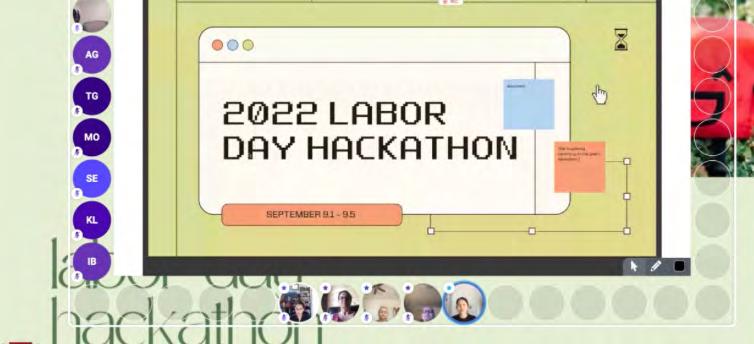
and apply their coding knowledge, strengthen soft skills, and make connections with other Pixels, but it was also an opportunity for Stanford OHS staff and instructors to inter act and get to know their students beyond the walls of their academic classroom.
“I had the privilege of being a mentor for the past two years,” said Ms. Revathi, who has been mentoring for the Stanford OHS hackathon for the past two years.” I considered it to be a huge honor. I personally felt if I can support these young up and coming coders in any which way I can, I would have achieved my goal. I wanted to just be there as a shad ow. I did just that. I listened to their ideas. I nudged them with a couple of pointers. I knew my limits. I did not know coding. That did not matter. As their mentor, I wanted to stress on the most important aspects of the hackathon and to also respect the whole event in the spirit it was created and intended to be, which was to try their level best and to have fun. I also wanted to make sure that their confidence level was supreme. All in all, it has been a very rewarding experience. If asked again I would accept the mentorship instantly with not an ounce of hesitation.”

Check out the submissions and the judges’ comments of the first-place winner and the special recognition winner below:

The first-place winner of this year’s hackathon is product “Uplift” by Mona O. ‘26. “Uplift” is a mobile application that was created by using MIT App Inventor. Starting from the idea that support of any kind from friends and family will help a person placed in the difficult circumstance of a quarantine, Uplift went on to identify six ways to alleviate their isolation. The jury noticed the very signifi cant amount of logic and considerable complexity in the implementation which leveraged the chosen platform very well. The project description was well written and the presentation was polished and informative. It is an impressive amount of work done within the short timeframe of the competition.
The Special Recognition Prize goes to “Health@Home” by Amarina R. ‘27 and Neev S. ‘28. “Health@Home” is a web-based application that outputs recommen dations on which medications to take once users provide their symptoms. The submission is noteworthy for its well-chosen and surprisingly usable idea that has been overlooked in a well-trodden segment. Team Panda scoped the project well and were able to complete it to fully demonstrate their vision within the available time window. The result is a readily usable recommendation system for over-the-counter drugs, where informed choices are not otherwise obvious. We tested the system and found it well researched and thought out: the technique behind it is called expert system in classic AI and is well matched for the chosen task.
Thank you, all participants, for your dedication during the hackathon. We hope to continue hosting hackathon as a Stanford OHS annual event where students can join to showcase their skills and have fun with other Pixels!

Stanford OHS Outreach Programs offer academic enrichment programs that bring together intellectually curious students from around the world to engage in online and residential learning communities. Courses dive deep into cutting-edge topics – from bioscience to number theory – and are designed to inspire academic accomplishment.
Stanford Pre-Collegiate Summer Institutes, Stanford University Mathematics Camp, and Stanford Middle School Scholars Program courses are primarily taught by Stanford OHS instructors, many of whom hold advanced degrees in their fields. Stanford Humanities Institute courses are taught by Stanford University faculty and graduate students.
Several sessions will take place from late June through early August. Applications will open in December, and financial aid is available. To learn more, visit: spcs.stanford.edu/programs.
Stanford Pre-Collegiate Summer Institutes provides academically motivated and intellectually curious students with intensive study in a single course. Students attend courses designed, created, and taught by instructors who are knowledgeable in their fields and passionate about teaching. Throughout the session, students build connections with peers from around the world through group projects, student life workshops, and fun community events.
Grades: 8-11
Program Format: Online
“Stanford Pre-Collegiate Summer Institutes allowed me to collaborate with like-minded designers and create an actual product from start to finish. The entire design process was truly meaningful as I was able to dive deeper into a field I’m interested in while also learning from my professor, an experienced designer. From the day I started, I felt truly engaged in the course and visibly saw my growth in both skill and perspective.”
Anushka, 2022 Stanford Pre-Collegiate Summer Institutes Participant Course: Product Design
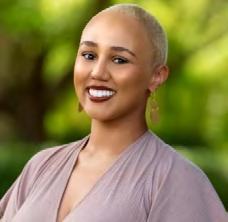
Stanford Summer Humanities Institute is a three-week residential program where rising high school juniors and seniors explore the big questions at the heart of the humanities. Distinguished Stanford professors teach all of the courses, sharing their expertise and passion with participants. In each course, participants tap into Stanford University’s excellence in the humanities and social sciences—exploring texts and ideas at a profound level, writing collegelevel papers, and communicating complex arguments in their academic writing and discussion sections.
Grades: 10-11 Program Format: Residential
“It was great to be part of a community where intellectually curious students and professional teaching faculty kindled thoughtful insights together. I completed and left the program not only with a greater philosophical understanding, but also enhanced critical thinking, and public speaking skills that transform me into a more confident and capable thinker and speaker.”
Hsin-Yu, 2022 Stanford Summer Humanities Institute Participant Course: The Greeks and Beyond

It’s been incredible to see SMSSP students build community within their cohorts, engage with academic material from their Stanford OHS instructor, and interact with Stanford OHS student leaders. We have a really special group of students in the program this year, and I’m excited to begin working with them and their families on high school planning and thinking about how Stanford OHS could fit into their plans.
by Nicole Varveris”
“
Marketing and Outreach Specialist, Stanford Pre-Collegiate Studies and Outreach Programs
by Lauren Lee
Director of Diversity, Equity, Inclusion, Belonging & Access
Stanford University Mathematics Camp (SUMaC) welcomes a select group of mathematically talented rising high school juniors and seniors from around the world for intensive study in advanced mathematics. This summer we will offer both online and residential options. Each student attends one of two courses, both of which build on topics central to mathematics through their historical significance and their relevance to current lines of mathematical research. Through daily problem sets, live instruction sessions, guest lectures, and more, students engage in deep exploration of mathematics and develop as mathematicians.
Grades: 10-11
Program Format: Residential or Online
“I enjoyed every moment of my learning experience at SUMaC. Through the lectures and problem sets, I not only developed a profound interest in higher-level mathematics like abstract algebra but also mastered mathematical thinking skills such as how to critically think about problems after an initial encounter. SUMaC inspired me to approach problems from a deeper perspective and think outside the box. The intensive and collaborative work made me understand and truly appreciate what mathematicians do.”
Yunjia, 2022 Stanford University Mathematics Camp Participant Course: Abstract Algebra & Number Theory

Stanford Middle School Scholars Program (SMSSP) instructs students in the skills needed to succeed in an academically rigorous high school. Stanford Middle School Scholars build community with Stanford Online High School instructors and fellow scholars from across the United States.
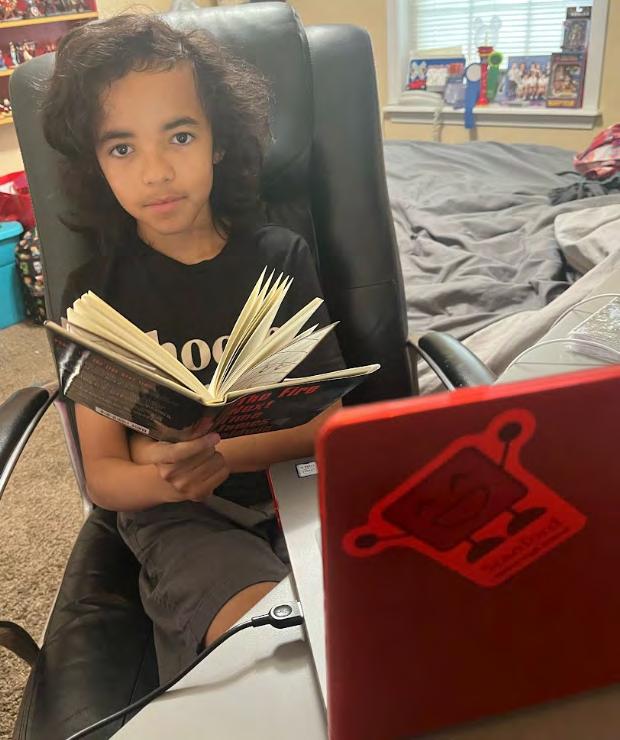

Scholars enroll in one of three two-week summer courses in July. From mid-August through March, scholars meet weekly in small cohorts led by Stanford Online High School instructors and staff, covering topics such as applying for independent (private) high schools, academic writing, time-management, math enrichment, and study skills.
Grades: 6-7
Program Format: Online
“I chose to attend the Stanford Middle School Scholars Program because my teacher recommended it to me and it seemed like an excellent opportunity to improve my reading and writing skills. In the time that I’ve been in this course, I’ve learned many new and great things. I’ve met new people with different backgrounds and I’ve participated in many of the student life activities.”
Arnaldo, 2022 Stanford Middle School Scholars Program Participant

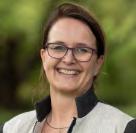

Introducing two new technologies to the Stanford OHS community for the current school year.


The first technology that will be intruducted soon is InSpace, a social virtual gathering platform which we will test in a pilot form this year in various Stanford OHS Student Life events and school activities. Our hope is that InSpace will encourage student to student engagement outside the classroom. We also believe that it will provide an easy to use, casual engagement platform for virtual parent events. InSpace rose out of an evaluation of a larger number of virtual web conference platform in Spring that were reviewed particularly for social events outside the classroom. Some of the features we like about InSpace:
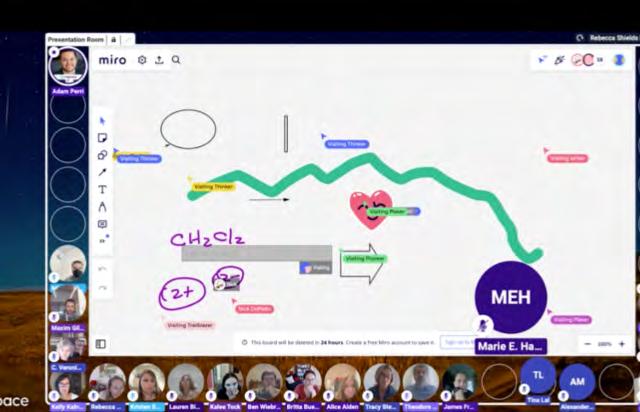
It resembles a ‘physical’ space better than what Adobe Connect or Zoom can do and feels closer to a physical space.
The availability of a ‘Audio proximity’ feature which allows for smaller groups to ‘huddle’ and use audio that can only be heard by anyone ‘close’. This allows one to talk in small groups without having to move into a separate room or break out room but simply by moving oneself around the virtual space.
Capability to move (‘walk’) around like in a physical space to do casual interaction with different people. Fun activities are easily set up by utilizing the ‘moving’ around feature in combination with different background images (for example to have everyone ‘vote’ for a topic by moving themselves into a different part of the space on the background which shows ‘yes’, ‘no’, ‘maybe’).

Break out rooms where participants can move themselves into and where it can be seen by everyone from the outside who is in the break out room. This will allow for events like science conference poster sessions for example.
The second technology that is new to us this year is Salesforce CRM. We are currently rolling it out to the various administrative departments to achieve a more streamlined communication between departments as well as an organization tool for our advising team. There is no change for students and parents in the short term on how they interact with the different OHS departments but we plan to roll out a student and parent facing portal in the Winter of 2022-23 that will provide families with a one stop to access communication and information material.
Functionality that will be included in the student and parent portal:
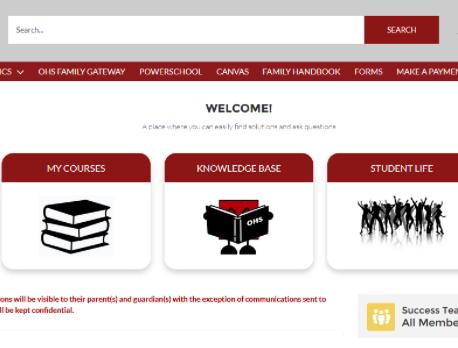
• Submission of communications to all OHS offices from one location.
• Access to past communications with the OHS offices which includes parent and guardian access to their students’ communications.
• Scheduling of appointments with advisors and other offices.
• Easy to search Knowledge base articles for how to navigate administrative functions.
 by Natalie Cooper
by Natalie Cooper
This series will interview Stanford OHS’s college counselors, with a focus on getting to know them a little deeper, learning about their own college experiences, and receiving some advice on the college process for Stanford OHS students.

Meghan Kuhn, the new assitant joined Stanford OHS in August 2022. Ms. Kuhn earned her BA in English and is currently pursuing an MFA in Creative Writing, both from Cornell College. Before coming to Stanford OHS, she worked in undergraduate admissions at her alma mater and then made the switch to college counseling at the British International School of Chicago. Ms. Kuhn is particularly passionate about college admission essays and has focused her graduate work on helping students find their authentic narrative voice. In her free time, Ms. Kuhn can be found reading, writing, baking, roller-skating, and going on long walks with her partner, Marc, and dog,
Q: What factors were important to you in your college search? Why did you decide on Cornell College?
A: Coming from a small town, I was 100% certain I would end up in a big city! But after visiting a few big-city universities, I began to worry that a large city and a large school would mean getting lost in the shuffle, and I thought that a smaller school might be a better fit for me. So I switched my focus to finding a place where I could feel comfortable and challenged. Cornell College offered a One Course at a Time academic calendar that allowed me to hyper-focus on my studies, in addition to having a stunning residential campus. At the end of the day, I landed where I needed to be.
A:This has to be a two-way tie between 18th Century Satire and studying Dante’s Divine Comedy in Florence. Both courses taught me so much about political writing, but it’s hard to compete with the one that also offered access to gelato every single day.
Q: What do you like most about Stanford OHS (so far)?
A: I love the variety of passions that Stanford OHS students have. The willingness to explore and create is truly impressive!
Q: When you’re not providing sage advice or writing letters of recommendation for seniors, how are you spending your time?
A: You can generally find me snuggled on the couch with my dog, working on my novel. My husband and I also enjoy scouting for Chicago’s best bagel place (recommendations welcome).
Q: What advice do you have for students as they think about college at this time of year?
A: At the end of the day, there is no “Utopia University.” You could likely be happy at a variety of institutions! Keeping that in mind, here’s my number one piece of advice: don’t try to be the student you think colleges want. Be who you are, and you will find the right fit.
Stanford OHS students presented their research at the Fall 2022 Student Research Colloquium.
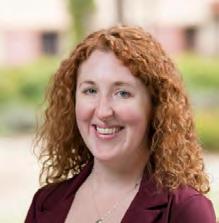


Seven students presented their research at the Student Science Research Colloquium on Friday, October 7. Longer versions of their projects are available at this link , and a link to the recording is available at this link. Briefly, Rishi J. showed that bilingual participants score higher on explicit episodic memory of pairs of words than monolingual speakers, but there was a large spread in this effect due to the different degrees of bilingualism and other factors . Supriya N. reported on improving fencing performance by warming up for 15 minutes and affecting brain wave activity, muscle activity, and brain wave activity, improving reaction time by 15%. Elane K. shared data on patterns of taste cell progenitor proliferation during
regeneration. Mason C. described metabolic changes in ductal carcinoma and showed how certain features can be predictive of recurrence. Reed U. presented class data on how speckle interferometry at the Mount Wilson Observatory improved the resolution of two close binary star pairs. Keshav N. shared class data from the Las Cumbres Observatory on 28 double star systems and analyzed the likelihood that each system was gravitationally bound. Isra B. showed how artificial intelligence can help doctors detect neonatal jaundice and thus avoid an important cause of mortality. All studente did an excellent job presenting and answering questions. Be sure to join us for the Spring session of the Science Student Research Colloquium on March 3, 2023!
Stanford OHS Open Science Bowl Tournament competitors, organizers, and moderators
In a first for Stanford OHS, the Science Bowl club hosted an open tournament on September 23 available to all Stanford OHS students. Organized by Tanish K. and Siddhant K., both club leaders and veteran players, the day included a round robin-style tournament with 20 students. Most players were new to Science Bowl, but quickly picked up the rules and worked together on teams. Stanford OHS science instructors got in on the fun too, moderating the rounds. After an impressive day of competition, the team of Arnav B., Shreyas M., and Josh T. were crowned the winners, earning themselves a Pixel-themed Rubix cube. Congrats to all of the participants! We look forward to seeing you again in the Science Bowl club and next year’s tournament.

